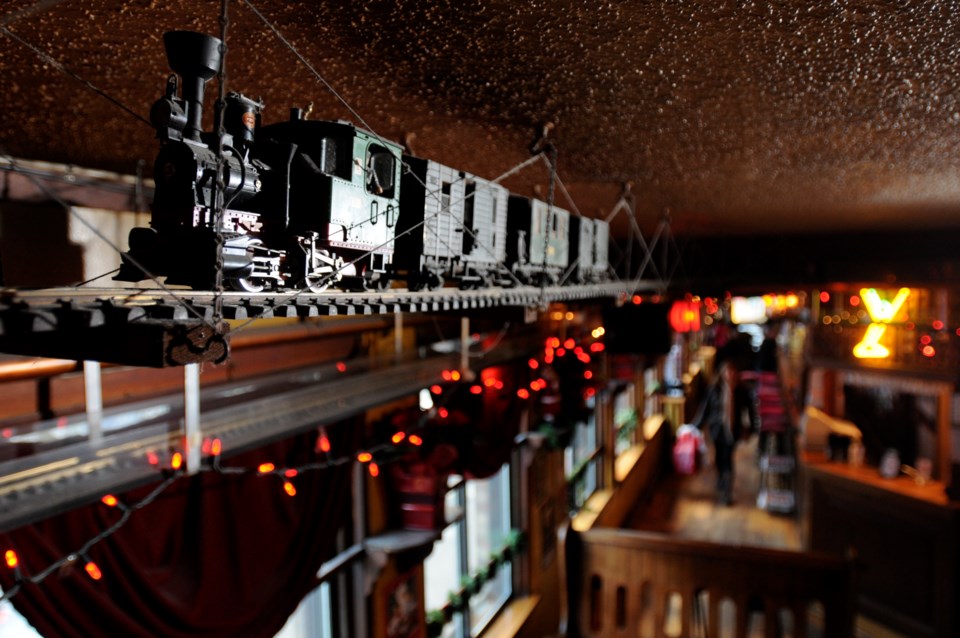The arrival of a New Year and a new decade brings nostalgia for the old times of our past. For a moment at least, fond memories and former companions can come into sharp view.
A new book by former Courier contributor Aaron Chapman, Vancouver After Dark: the Wild History of a City’s Nightlife, has inspired a trip down memory lane where I am reminded of the deep connections we form with a place through its many watering holes, dance floors and music halls.
Chapman documents venues from a bygone era that helped form Vancouver’s “DNA.” He also aims to debunk the city’s “No Fun City” label.
“There’s always been something going on. There’s plenty of fun to be had [here in Vancouver],” says Chapman. “In fact, if I sat down with my doctor, he’d probably tell me I’ve had far too much fun in the last 20 years.”
I confess to having too much fun in my youth as well, including at some of the venues described in the book, and many others that were omitted.
During the early 1980s as a UBC student, some of my social life was divided between West Side bars, including Bimini’s, the King’s Head and Jerry’s Cove.
On campus in the basement of the SUB building there was The Pit, a pub I remember for a scent of stale beer and a momentous night of dancing to Vancouver ska pioneers the Villains.
For a few years, the Side Door bar on West Broadway was a hangout. Not surprisingly, the venue set a record for the most police-dispatched calls of any West Side liquor establishment, probably because of its unfortunate location among apartment buildings.
The impending arrival of Expo 86 brought about changes in B.C.’s famously punitive liquor laws, such as allowing Sunday openings for bars and liquor stores. Thankfully, buying a beer on a Sunday did not seriously tear at Vancouver’s moral fabric, though apparently some today think getting wine in a grocery store would.
What also followed Expo 86 was a golden age of live music clubs, such as the Town Pump in Gastown, and the pivotal years of the Railway Club located on Dunsmuir Street.
Chapman devotes a chapter to the former, noting some of the incredible music acts — both local and from abroad — that took the stage. At the bar affectionately referred to as the Town Dump, I remember seeing the very first local performance of the Tragically Hip.
I admit I was hardly paying any attention to the new act until singer Gordon Downie — then sporting a head of long, wavy hair —just owned the place with an amazing performance I’ll never forget.
There’s a chapter in Vancouver After Dark describing the Marine Club, a Homer Street dive beloved by many. This was the place my friends and I would wind up at after a few pints, to play pool, drink more beer and listen to old-timer Frank Lewis sing and play his Hammond organ.
Apart from its unpretentiousness, there was nothing special about the place other than you had to push a buzzer to be let in, like at some prohibition era speakeasy.
Memories flood in of the Railway Club, with the doorman Stan controlling crowds, and the Real McKenzies — of which Chapman was a member — ripping up the bandstand.
Many recollections come to me about the Commodore Ballroom, such as attending “Budstock” and its famous 10 Bands for 10 Bucks lineup. It’s where I saw Foo Fighters play their first Vancouver gig, and where I interviewed Cheap Trick guitar hero Rick Nielsen back stage.
I’ll never forget the powerhouse Pleasure Barons show there, featuring underground all-stars Mojo Nixon, Dave Alvin and Country Dick Montana, who would later die of a heart attack on-stage at the Longhorn Pub in Whistler.
The Rose and Thorne pub — a.k.a. The Rat — on Richards Street was a regular haunt for years. As were the many nights dancing at Luv-a-Fair and the rare times I visited Graceland. Pick up Chapman’s book to read about that venue’s connection to a legendary B.C. MLA.
I remember nights at 86 Street, the Cruel Elephant and the Gandy Dancer among others, and too many after hours meals at Bino’s and Frescos.
What a city. What fun we had. Happy New Year!



